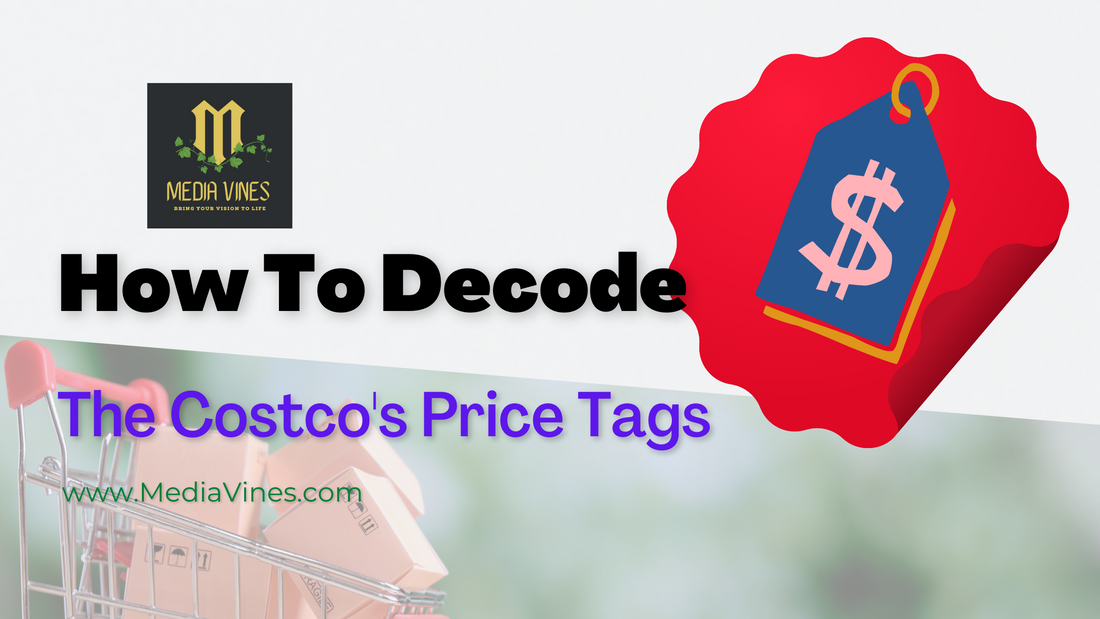Introduction
If you're new to Costco or just looking for a fun way to pass the time, try decoding their price tags. While most of us have grown accustomed to seeing prices like $5.99 and $4.97, there's actually a lot more happening under the hood than you think.
You go to Costco and you're like, "wow, these prices are cheap."
But then you look down at your cart and think, "wait a minute… how can I afford all this?"
Well, we've got a few tips for you on how to decode the Costco pricing system so that you can get the most bang for your buck.
Here are some common price tag formats at Costco that will make your next shopping trip easier—and maybe even slightly less painful on your wallet:
Click on image to get a bigger view, download or share
The .99 price tag
If a price tag ends in .99, it's a full-price item. It's a Costco thing, and it's become somewhat of a meme among the members who frequent the store. Well, if you've ever wondered why retailers do this, it's because they want to trick you into thinking that your purchase is cheaper than it actually is. The .99 ending is meant to make you think that the item is on sale (or at least less expensive than full price).
So if an item has a price tag of $29.99, for example, it really costs $30—and not $29!
The .97 price tag
The price ending with .97 is Costco's way of telling you that the item is discounted. If you see something at Costco and it has a price tag ending in .97, get it! It’s a good deal!
At Costco, look for anything with a price tag that ends in 97 cents. That means it’s being sold below cost (i.e., you won’t find it cheaper anywhere else).
Clearance prices ending in “.97” are marked down from the regular price. The clearance price may go even lower if the product has been sitting on the shelves for a while at this price. The way to tell is to look at the date code, usually in the bottom right corner of the price tag. If the discount is new, there’s a chance they could further discount it.
The .00 or .88 price tag
If you see this on an item, it means that it's either on clearance or it's not their top-of-the-line model. At the manager's discretion, in-stock merchandise are priced at a discount. The inventory is priced to move and typically will not be matched by other warehouses. These prices can mean the item is a sellable return or a floor model. Inspect these items before purchasing as they could be damaged in some way.
The asterisk (*) price tag
The asterisk (*) price tag indicates the product is not restocked, or will no longer be sold at Costco. The asterisk means that it won't be stocked again and is considered a clearance item.
If you're looking for a specific item, keep an eye out for this symbol. If you find one and want to buy it, don't wait too long because they sell out quickly!
The .49, .79 or .89 price tag
If the price tag ends in .49, .89, or .79 it means Costco got a special deal from the manufacturer.
Closing
While shopping at Costco, you might find yourself wondering why there are so many price tags attached to each product. There are two reasons for this: 1) it helps with inventory management; and 2) it provides a better price comparison than without them. By reading the tags correctly, you can get a good idea of how much you should be paying for an item and whether it's worth buying or not.
First of all: don't get carried away by the discount pricing. There are times when it's just better to pay full price for things. For example, if it's an item that's going out of season or something seasonal like Christmas decorations that will only be in stock again next year. You don't want to buy those things at a discount because they'll probably be cheaper next year anyway!
Another thing is—they move things around to get you to wander the aisle for impulse buying. So if there's something that catches your eye and makes you feel like buying it right now, don't do it! Move on down the aisle and try not to look back!






